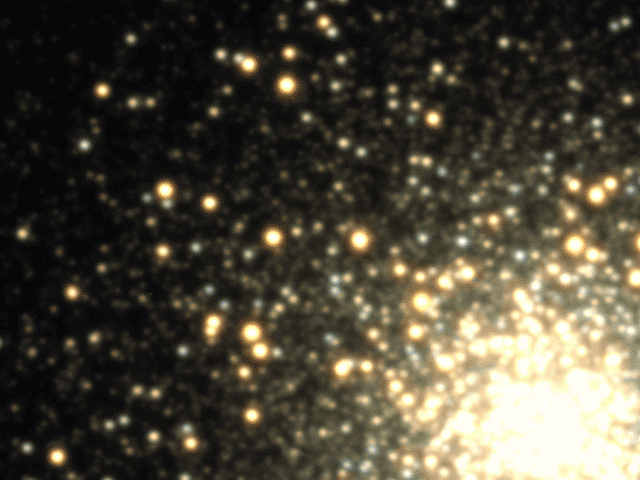a different method for studying the stars in a globular cluster, is to look at how the light levels of individual stars change... which occur for some stars on much shorter timescales. that brings me to the fascinating time-lapse movie of the globular cluster, M3 (NGC 5272), shown below.

cool, huh?! listen to whatever music you want, and its sort of like the popular choreographed christmas light displays!!
the movie above was created from 4 images taken within the same night! most of the stars remain the same brightness and color, but many stars change their brightness level drastically and become more blue over over this very short time period! these variable stars are called RR Lyrae stars (named after the first one identified - the RR star in the constellation Lyra).
these stars are different than our sun and the other stars in the image because they get larger and smaller over the course of a couple days. they inflate and deflate like a balloon, over and over, because of the specific nuclear reactions happening in their cores. changing the size of a star changes its surface area and temperature, and therefore how much light it produces and how bright it appears to our eyes. the RR Lyrae appears brightest when it is smallest in size and hottest is temperature.
once you identify RR Lyrae stars, you can use their changing brightness to accurately determine how far away they are!
thanks to julianne at cosmic variance who reminded me of this great image while she described the boost of funding the Large Synoptic Survey Telescope just received from Charles Simonyi and Bill Gates!!
3 comments:
The piture is so cool. I'm going to use with my pupils. Thanks
I know you don't say it but your first paragraph could easily leave people with the impression that the Pleiades is a globular cluster.
Thanks to Dr. Pamela Gay, I was able to read your research paper.
Way to go girl!
Post a Comment